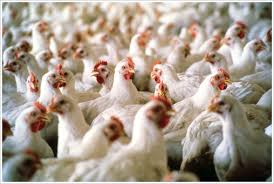Identification and characterization of missing genes in chickens
Including two adipokines: leptin and TNF
M. Friedman Einat miri.einat@mail.huji.ac.il

E. Seroussi , S. Yosefi , S. Benjamini , S. Miyara , S. Bornelöv , F. Pitel , S. Leroux ,M. Morisson , L. Andersson*
The satiety hormone leptin has a key role in the control of energy homeostasis in mammals. Leptin is produced almost exclusively by the adipose tissue and signals the amount of fat stores primarily to the hypothalamus, but also to peripheral tissues.
Recently, we identified the long sought leptin (SEROUSSI et al., 2016), in the “dark side of the chicken genome”, meaning extremely GC-rich regions that have been difficult to sequence and assemble.
Expression profiling of the avian leptins showed a different pattern compared to mammals, surprisingly with no expression in the adipose tissue. Nevertheless, we found that leptin and the leptin receptor (LEPR) genes are expressed in tissues that are implicated in the response to leptin signaling in mammals, and theirexpression pointed to an autocrine/paracrine instead of endocrine mode of action.
Therefore, the role of avian leptins may be relevant to the control of reproduction, stress response and metabolism, but in a different way than in
mammals, as it is not the signal of the adipose tissue. Following the success of the identification of chicken leptin and realizing its presence in RNA-seq data rather than genomic assemblies, we asked if other missing genes in chicken could be identified using the RNA-seq approach.Extensive RNA-seq analysis of visceral fat, hypothalamus and pituitary, followed by transcript assembly and bioinformatic analysis led to the identification of 191 novel genes in chickens (BORNELOV et al., 2017), all with very high GC content (~70%). These included the tumour necrosis factor (TNF, also known as TNF-alpha) and nephrin (NPHS1), which were long sought after in the chicken genome. Interestingly, 25 of our novel genes were mapped to the chicken genome in the most recent genome assembly Galgal5.

This mapping showed the tabout 70% of the genes were mapped to chicken microchromosomes, which are known to be GC-rich. The same proportion of genes were mapped in gene blocks demonstrating that the indication that missing genes arranged in gene clusters in other vertebrates cannot be taken as an indication for their evolutionary loss.
Altogether, these findings suggest that other missing genes in chickens may be positioned in GC-rich gene clusters in the chicken genome. Among our novel chicken genes, we found five genes belonging to the leptin synteny group in vertebrates: RBM28, SND1, LRRC4, and FLNC.
We used this identification to map the chicken leptin gene and its syntenic genes to the chicken chromosome 1p (SEROUSSI et al., 2017), thus providing the final proof for the correct identification of the chicken leptin gene.
*Agricultural Research Organization, Volcani Centre, RishonLeZion, Israel
Dept. of Medical Biochemistry and Microbiology, Uppsala University, Uppsala, Sweden
References
BORNELOV, S., E. SEROUSSI, S. YOSEFI, K. PENDAVIS, S.C. BURGESS, M. GRABHERR, M.FRIEDMAN-EINAT, L. ANDERSSON, 2017: Correspondence on Lovell et al.:identification of chicken genes previously assumed to be evolutionarilylost. Genome Biol. 18:112.
SEROUSSI, E., Y. CINNAMON, S. YOSEFI, O. GENIN, J.G. SMITH, N. RAFATI, S. BORNELOV, L.ANDERSSON, M. FRIEDMAN-EINAT, 2016: Identification of the Long-SoughtLeptin in Chicken and Duck: Expression Pattern of the Highly GC-RichAvian leptin Fits an Autocrine/Paracrine Rather Than Endocrine Function.Endocrinology 157:737-751.SEROUSSI, E., F. PITEL, S. LEROUX, M. MORISSON, S. BORNELOV,
S. MIYARA, S. YOSEFI, L.A.COGBURN, D.W. BURT, L. ANDERSSON, M. FRIEDMAN-EINAT, 2017: Mapping of leptinand its syntenic genes to chicken chromosome 1p. BMC Genet.18:77.




